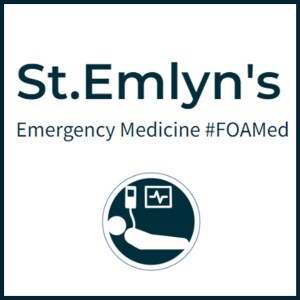
- Podcast Features
-
Monetization
-
Ads Marketplace
Join Ads Marketplace to earn through podcast sponsorships.
-
PodAds
Manage your ads with dynamic ad insertion capability.
-
Apple Podcasts Subscriptions Integration
Monetize with Apple Podcasts Subscriptions via Podbean.
-
Live Streaming
Earn rewards and recurring income from Fan Club membership.
-
Ads Marketplace
- Podbean App
-
Help and Support
-
Help Center
Get the answers and support you need.
-
Podbean Academy
Resources and guides to launch, grow, and monetize podcast.
-
Podbean Blog
Stay updated with the latest podcasting tips and trends.
-
What’s New
Check out our newest and recently released features!
-
Podcasting Smarter
Podcast interviews, best practices, and helpful tips.
-
Help Center
-
Popular Topics
-
How to Start a Podcast
The step-by-step guide to start your own podcast.
-
How to Start a Live Podcast
Create the best live podcast and engage your audience.
-
How to Monetize a Podcast
Tips on making the decision to monetize your podcast.
-
How to Promote Your Podcast
The best ways to get more eyes and ears on your podcast.
-
Podcast Advertising 101
Everything you need to know about podcast advertising.
-
Mobile Podcast Recording Guide
The ultimate guide to recording a podcast on your phone.
-
How to Use Group Recording
Steps to set up and use group recording in the Podbean app.
-
How to Start a Podcast
-
Podcasting
- Podcast Features
-
Monetization
-
Ads Marketplace
Join Ads Marketplace to earn through podcast sponsorships.
-
PodAds
Manage your ads with dynamic ad insertion capability.
-
Apple Podcasts Subscriptions Integration
Monetize with Apple Podcasts Subscriptions via Podbean.
-
Live Streaming
Earn rewards and recurring income from Fan Club membership.
-
Ads Marketplace
- Podbean App
- Advertisers
- Enterprise
- Pricing
-
Resources
-
Help and Support
-
Help Center
Get the answers and support you need.
-
Podbean Academy
Resources and guides to launch, grow, and monetize podcast.
-
Podbean Blog
Stay updated with the latest podcasting tips and trends.
-
What’s New
Check out our newest and recently released features!
-
Podcasting Smarter
Podcast interviews, best practices, and helpful tips.
-
Help Center
-
Popular Topics
-
How to Start a Podcast
The step-by-step guide to start your own podcast.
-
How to Start a Live Podcast
Create the best live podcast and engage your audience.
-
How to Monetize a Podcast
Tips on making the decision to monetize your podcast.
-
How to Promote Your Podcast
The best ways to get more eyes and ears on your podcast.
-
Podcast Advertising 101
Everything you need to know about podcast advertising.
-
Mobile Podcast Recording Guide
The ultimate guide to recording a podcast on your phone.
-
How to Use Group Recording
Steps to set up and use group recording in the Podbean app.
-
How to Start a Podcast
-
Help and Support
- Discover

In emergency medicine, our primary objective is to rule out life-threatening conditions first. This principle guides our approach to patients with chest pain. Here are the top five diagnoses to consider:
- Acute Coronary Syndrome (ACS)
- Pulmonary Embolism (PE)
- Pneumothorax
- Pneumonia
- Aortic Dissection
These conditions can have overlapping symptoms but differ significantly in their management and prognosis. Let’s explore these further.
Acute Coronary Syndrome (ACS)When a patient presents with chest pain, ACS is often the first concern. Key symptoms include central crushing chest pain, which may radiate to the arm or neck. While classic presentations are familiar to most, not all patients exhibit textbook symptoms. Factors like age, gender, and comorbidities can alter the clinical picture.
Initial Assessment and ECG InterpretationEvery patient with chest pain should receive an ECG as part of the initial workup. Interpreting ECGs requires a high level of expertise, as subtle changes can indicate significant pathology. In our department, only senior emergency physicians are tasked with reading initial ECGs to minimize the risk of missing critical findings. It's important to assess each ECG independently, even if previous records are available, as baseline abnormalities can obscure new, acute changes.
Troponin TestingFor patients where myocardial ischemia is suspected, a troponin test, particularly high-sensitivity troponin, is essential. This biomarker helps identify myocardial injury, even in cases where the ECG does not show definitive changes. Given the serious implications of missing an ACS diagnosis, a low threshold for testing is prudent. Approximately 10% of patients with a normal ECG may still have significant disease, highlighting the importance of comprehensive evaluation.
Pulmonary Embolism (PE)Pulmonary embolism is another critical condition to consider, especially in patients presenting with pleuritic chest pain, shortness of breath, or risk factors such as recent immobilization, malignancy, or surgery. The clinical presentation of PE can vary, complicating diagnosis.
Clinical Decision ToolsThe Wells score and PERC (Pulmonary Embolism Rule-out Criteria) are valuable tools in assessing the likelihood of PE. For low-risk patients, D-dimer testing can be used to rule out the condition, reducing the need for further imaging. However, for patients deemed at higher risk, CT pulmonary angiography (CTPA) is the gold standard for diagnosis. The decision to pursue imaging should be guided by clinical judgment and, where necessary, discussed with senior colleagues to avoid unnecessary radiation exposure and follow-up testing.
PneumothoraxPneumothorax should be considered in both young, otherwise healthy individuals and older patients with underlying lung disease. The hallmark symptom is sudden onset pleuritic chest pain, often accompanied by shortness of breath.
Diagnostic ApproachA chest x-ray is typically sufficient to diagnose pneumothorax. Given the low radiation dose and high diagnostic yield, x-rays should be performed for most patients with suspected pneumothorax. The imaging will not only confirm the presence of air in the pleural space but also help assess the severity and guide management decisions.
PneumoniaPneumonia is a common cause of chest pain, often accompanied by fever, cough, and sputum production. It is more common in patients with a history of respiratory disease or immunosuppression.
Identifying PneumoniaA chest x-ray remains the cornerstone of pneumonia diagnosis. Clinical symptoms, such as productive cough and fever, along with imaging findings of consolidation, help differentiate pneumonia from other causes of chest pain. While not immediately life-threatening in most cases, timely recognition and treatment are crucial to prevent complications.
Aortic DissectionAortic dissection is a less common but highly dangerous cause of chest pain. Classic symptoms include severe, tearing pain radiating to the back. It is critical to maintain a high index of suspicion for aortic dissection, especially in patients with risk factors such as hypertension, connective tissue disorders, or a family history of the condition.
Confirmatory TestingThe definitive diagnostic test for aortic dissection is a CTA aortogram. While a chest x-ray can sometimes reveal mediastinal widening, it is not sufficiently sensitive to rule out dissection. Early consultation with cardiothoracic surgery and rapid imaging are key to managing suspected cases.
Communicating with PatientsOnce life-threatening causes have been ruled out, patients often seek answers about their symptoms. When the etiology remains unclear, it’s important to communicate transparently with the patient. Possible benign causes include musculoskeletal pain or gastroesophageal reflux disease (GERD). While it’s reassuring to exclude serious conditions, acknowledging the limitations of our diagnostic tools and advising patients to return if symptoms change is crucial.
Patient Reassurance and Follow-upPatients should be advised to follow up with their primary care physician for further evaluation and management of non-urgent conditions. Clear communication, including documenting your diagnostic reasoning and plan, is vital for medico-legal protection and patient safety.
Conclusion: Mastering Chest Pain in the EDChest pain remains a complex and multifaceted challenge in the emergency department. The ability to swiftly differentiate between benign and life-threatening causes is a critical skill for emergency physicians. Our approach should be guided by a thorough history, physical examination, and appropriate use of diagnostic tools. Remember, the primary goal is to exclude serious conditions, ensuring patient safety while avoiding unnecessary investigations.
As you continue your journey in emergency medicine, refine your skills in evaluating chest pain. Be diligent in your assessments, stay updated with the latest guidelines, and always communicate clearly with your patients and colleagues. This comprehensive approach will not only improve patient outcomes but also enhance your clinical practice.
Read the blog post here
More Episodes
 2024-04-17
2024-04-17
 2.2k
2.2k
 2023-11-09
2023-11-09
 3.5k
3.5k
 2023-09-18
2023-09-18
 3.3k
3.3k
 2023-05-03
2023-05-03
 3.3k
3.3k
 2023-04-24
2023-04-24
 3.6k
3.6k
 2023-04-17
2023-04-17
 3.6k
3.6k
 2023-03-20
2023-03-20
 3.8k
3.8k
Create your
podcast in
minutes
- Full-featured podcast site
- Unlimited storage and bandwidth
- Comprehensive podcast stats
- Distribute to Apple Podcasts, Spotify, and more
- Make money with your podcast
It is Free
- Privacy Policy
- Cookie Policy
- Terms of Use
- Consent Preferences
- Copyright © 2015-2025 Podbean.com


